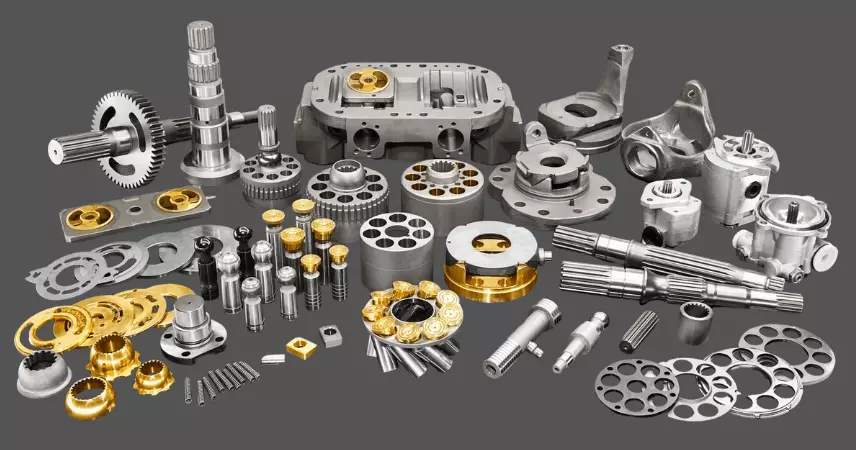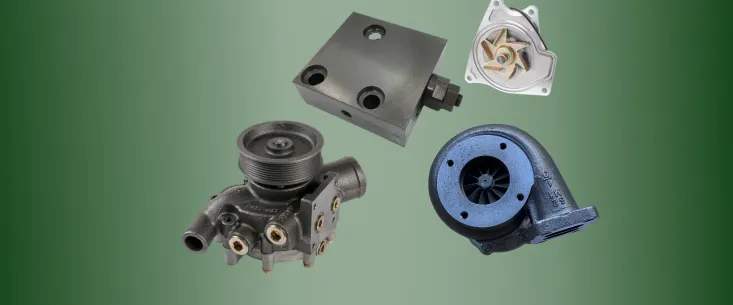+86-135 3388 0668

Hydraulic units are essential to a wide array of modern industrial machinery and equipment. These systems, which use pressurized fluid to create mechanical motion, are an integral part of numerous sectors, ranging from construction and manufacturing to aerospace and automotive industries. If you’ve ever wondered how massive construction cranes, forklifts, or even airplanes operate with such precision and power, the answer often lies in their hydraulic units.
The Basics of Hydraulic Units
At the core of any hydraulic system is the hydraulic unit, a combination of components that work together to harness the power of pressurized fluid. A hydraulic unit typically consists of a Hydraulic pump, hydraulic valves, and a reservoir, with pipes or hoses connecting these elements to the machinery that requires the power. The hydraulic fluid, usually oil, is pumped through the system under pressure, and this force is used to move actuators (such as cylinders or motors) that control the machinery's movement.

The beauty of hydraulic systems lies in their ability to deliver a significant amount of force in a relatively compact form. For example, while an electric motor might require a large amount of space and weight to generate the same amount of force, a hydraulic unit can achieve similar results with far less mass. This makes hydraulics an attractive option for industries where space and weight are critical factors, such as aerospace or heavy equipment manufacturing.
Key Components of a Hydraulic Unit
To better understand how hydraulic units function, it’s crucial to look at the key components that make up these systems.
Hydraulic Pump: This is the heart of the hydraulic unit. It takes mechanical energy and converts it into hydraulic energy by pressurizing the hydraulic fluid. The pump ensures that fluid flows through the system, generating the force necessary to move the machinery.
Hydraulic Reservoir: The reservoir serves as a storage tank for hydraulic fluid. It holds the fluid when it’s not in use, keeping it at the correct temperature and pressure. The reservoir also allows the fluid to cool and de-air before it’s pumped back into the system.
Hydraulic Valves: Valves are responsible for controlling the flow of hydraulic fluid. They regulate the direction, pressure, and flow rate, ensuring that the right amount of fluid reaches the correct components at the right time. Common types of valves include pressure relief valves, check valves, and flow control valves.
Hydraulic Actuators: Actuators, such as hydraulic cylinders or motors, are responsible for converting the pressurized fluid into mechanical motion. Hydraulic cylinders, for example, are used to extend or retract, providing linear motion, while hydraulic motors can provide rotary motion.
Hydraulic Fluid: The fluid used in hydraulic systems is critical to the system’s efficiency. It transmits power, lubricates components, and helps to dissipate heat. The choice of hydraulic fluid depends on the system’s requirements, such as temperature stability, viscosity, and Corrosion resistance.
The Importance of Hydraulic Units in Modern Industries
Hydraulic systems are used in a wide range of applications across various industries. Their ability to generate significant force with relatively little space and weight makes them particularly useful in heavy-duty machinery and equipment. Below, we explore how hydraulic units have become indispensable in different sectors:
Construction Industry: One of the most common uses of hydraulic units is in construction equipment such as cranes, excavators, and bulldozers. Hydraulic cylinders and motors allow for the precise control and movement of these machines, enabling operators to lift, dig, and move heavy materials with ease. Hydraulic systems are also used in pile drivers, concrete pumps, and other specialized machinery.
Manufacturing and Automation: In manufacturing, hydraulic systems play a crucial role in controlling the movements of robotic arms, conveyor systems, and presses. The precision and reliability of hydraulic units allow for high-speed and high-accuracy operations in the production of goods, from automobile parts to electronics.
Aerospace and Aviation: Hydraulics are vital in aircraft systems, from controlling landing gear and flaps to operating flight control surfaces. Hydraulic systems in airplanes are able to handle the high pressures required to function in such a demanding environment. The compactness and power density of hydraulic units make them ideal for aerospace applications, where weight reduction is critical.
Agriculture: Tractors and other farming equipment use hydraulic systems to power plows, harvesters, and other attachments. The ability to control these heavy machines with precision is crucial to ensuring efficient farming operations.
Automotive: Modern automobiles, especially larger vehicles such as trucks and buses, often rely on hydraulic systems for braking, steering, and suspension. Hydraulic braking systems, in particular, offer high reliability and force with a relatively small footprint, which is why they are standard in most vehicles.
Advantages of Hydraulic Systems
Hydraulic systems offer numerous advantages that make them preferable in certain applications. Some of these benefits include:
High Power Density: Hydraulic units can generate a significant amount of force in a small space. This is particularly useful in machinery where space is at a premium.
Precision Control: The ability to control hydraulic flow with fine precision allows for smooth, controlled movements in heavy machinery. This makes hydraulic systems ideal for operations that require exact positioning.
Durability and Longevity: Hydraulic components are designed to last for many years with proper maintenance. Hydraulic units are known for their ability to withstand high stress and harsh conditions, which makes them reliable in demanding industries.
Energy Efficiency: Hydraulic systems are generally more energy-efficient than other types of mechanical systems. This is because hydraulic power can be easily adjusted to match the needs of the application, reducing unnecessary energy consumption.
The Future of Hydraulic Units
As industries continue to evolve, the role of hydraulic units is expected to grow. With advancements in technology, modern hydraulic systems are becoming even more efficient, compact, and adaptable. For example, digital controls are increasingly being integrated into hydraulic units, allowing for more precise monitoring and optimization of system performance.
Furthermore, with a growing emphasis on sustainability and energy efficiency, hydraulic systems are also becoming more eco-friendly. New developments in biodegradable hydraulic fluids and energy recovery systems are paving the way for greener hydraulic technology.
Common Challenges with Hydraulic Units
While hydraulic units offer many benefits, they are not without their challenges. Like any complex system, hydraulics can experience issues that need to be addressed to ensure proper operation. Common problems include:
Leaks: Hydraulic systems rely on tightly sealed components, and even a small leak can cause a drop in performance or even system failure. Leaks often occur due to wear and tear on seals or hoses, or from contamination of the hydraulic fluid.
Contamination: Contaminants such as dirt, water, or debris can enter the hydraulic system, damaging components and reducing efficiency. This is why maintaining clean hydraulic fluid and filtering contaminants is so important for prolonging the life of the system.
Overheating: Hydraulic systems generate heat due to the friction and pressure of the fluid as it moves through the system. If the system becomes too hot, it can lead to fluid breakdown and damage to components. Therefore, proper cooling mechanisms, such as radiators or heat exchangers, are essential in maintaining hydraulic unit performance.
Pump Failures: The pump is one of the most critical components of a hydraulic system. If it fails, the entire system can stop functioning. Regular maintenance, including checking the condition of the pump and ensuring proper lubrication, can prevent costly breakdowns.
Maintenance and Care for Hydraulic Units
To ensure the continued success of a hydraulic system, regular maintenance is essential. Here are some tips to keep hydraulic units running smoothly:
Monitor Fluid Levels and Quality: Regularly check the hydraulic fluid to ensure that it is at the correct level and free from contaminants. If the fluid appears dirty or degraded, it should be replaced.
Inspect Hoses and Seals: Regularly inspect hoses, seals, and fittings for signs of wear or leaks. Replacing damaged components promptly can prevent more serious problems down the road.
Check Pressure and Flow: Ensure that the hydraulic system is operating at the correct pressure and flow rate. This can be done using diagnostic equipment that measures the performance of the system.
Maintain Cleanliness: Keeping the hydraulic system clean is essential to prevent contaminants from damaging components. Always use clean tools and parts when performing maintenance on hydraulic systems.
Lubricate Moving Parts: Many hydraulic components, such as valves and pumps, require lubrication to ensure smooth operation. Ensure that lubrication schedules are adhered to and that the correct lubricants are used.
Hydraulic Unit Innovations and Trends
As industries continue to seek greater efficiency and sustainability, innovations in hydraulic technology are emerging. Some of the latest trends include:
Electrification of Hydraulic Systems: Many manufacturers are looking to combine electric and hydraulic technologies to create hybrid systems that offer improved energy efficiency and reduced emissions. These hybrid systems use electric motors to drive hydraulic pumps, offering better control and energy use than traditional systems.
Smarter Hydraulic Systems: The integration of sensors, IoT devices, and advanced control systems is making hydraulic units smarter. These innovations allow for real-time monitoring of system performance, predictive maintenance, and the ability to adjust system parameters dynamically for optimal efficiency.
Eco-Friendly Hydraulic Fluids: As environmental concerns continue to grow, the development of biodegradable and non-toxic hydraulic fluids is on the rise. These fluids are designed to be less harmful to the environment in case of spills and reduce the overall environmental impact of hydraulic systems.
Miniaturization of Components: With the demand for compact and lightweight machinery, the miniaturization of hydraulic components is becoming more prevalent. Smaller, more efficient pumps and actuators are being developed to provide the same amount of power with less space and weight.
Hydraulic units are vital to the smooth operation of countless industries worldwide. From the construction site to the factory floor, these systems are the unsung heroes that power machinery and equipment with precision, reliability, and strength. As technology continues to advance, hydraulic systems are becoming more efficient, sustainable, and adaptable to the needs of modern industry. Whether you are an engineer, operator, or business owner, understanding the importance of hydraulic units is crucial to ensuring the continued success and efficiency of your operations.
Search
Blog & News